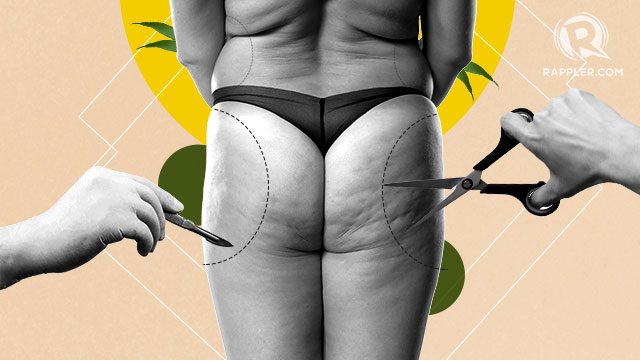SUMMARY
This is AI generated summarization, which may have errors. For context, always refer to the full article.

MANILA, Philippines – Despite the body positivity movement making waves here and abroad, liposuction still remains one of the most sought after plastic surgery procedures in the Philippines.
Also known as liposurgery, liposuction is performed by inserting a blunt needle through a small hole in the skin. Fat deposits are then sucked out through the needle.
Literally having the fat sucked from your body seems like a great shortcut to having a beach-ready body year-round, but lipo isn’t quite that simple. Not everyone of all ages and sizes can get it, for one thing, and nothing beats good old-fashioned exercise when it comes to having a healthy body.
We spoke to doctor MJ Torres of The Zen Institute to find out more about liposuction – why people get it done, what exactly happens when you get it, and what you should expect before and after the procedure.
Ideal patients
Though liposuction seems easy, there are really no shortcuts to a healthy lifestyle. Before a patient can undergo liposuction, doctors will look at their body-mass index (BMI), said Torres, to check if it’s okay for them to undergo the procedure.
If the patient is obese or overweight, they’ll recommend a weight management program and nutritional counseling. A person with a regular BMI but has a high risk of heart disease, diabetes, or other systemic diseases can get lipo, but their diseases need to be controlled.
The reason weight management is so important is because lipo isn’t a weight management program: “Because the patient might be expecting that after liposurgery, which is body sculpting, he or she will lose weight. And those are two different things. You don’t lose weight when you do liposurgery,” said Torres, further explaining that fat is light and removing it isn’t enough to bring your BMI down to normal.
Another reason health management is important is that lipo won’t prevent fat from accumulating in places where you haven’t had the procedure done. If you get lipo on your abdomen, for example, the excess calories you consume need to be stored somewhere, so fat will build on your arms or legs.
If you have a normal BMI and have less than two to 3 inches of fat, then meso-lipo therapy, a non-surgical way of removing fat, may be a better procedure for you.
For some, like Nicole*, a doctor who has undergone liposurgery twice, the procedure jumpstarted her healthy lifestyle and motivated her to work out. She had her arms, stomach, back, and love handles done.
Pre-operation
Before surgery, Torres suggests 3 months of lifestyle management first, so that there’s less fat on the big day and a patient just has to maintain his or her lifestyle post-op.
A patient should have at least 24 hours of rest before the surgery, and the clinic doing the procedure needs to get cardiopulmonary clearance beforehand.
Surgery
It takes about an hour to conduct liposurgery on one part of the body, so an operation that includes the whole body – the abdomen, back, arms, and thighs – can take anywhere from 4 to 6 hours long. Most patients are put to sleep during the procedure.
For large areas, a needle with a hole on the tip is used together with a suction machine to remove the fat. If the area is small, a negative pressure syringe is used instead.
Not all fat is destroyed, though – there still has to be some fat attached under the skin, so it won’t sag, and so dimpling – which happens when a patient gains weight and stores fat between destroyed fat cells – doesn’t occur.
Post-procedure
Because it’s surgery, there will be bruising and some pain after lipo is performed. A compression garment also needs to be worn for the next two to 3 months, because “[the area where the fat was destroyed] becomes now a 3rd space and swelling and fluid can always be accumulated,” according to Torres.
After Nicole’s surgery, she didn’t go to work for 3 days. She recounted feeling like she had been beat up. But the biggest hassle was the compression garment, as she had to coordinate her outfits so it wouldn’t be visible.
Cost
The cost of liposurgery in the Philippines varies according to how many parts of the body will be done – it can be performed on the upper abdomen, lower abdomen, love handles, upper back, lower back, left and right arms, and left and right thighs. According to doctor Annie Akiyama of The Zen Institute, lipo on the whole abdomen can cost anywhere between P120,000 and P350,000. – Rappler.com
Add a comment
How does this make you feel?
There are no comments yet. Add your comment to start the conversation.